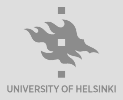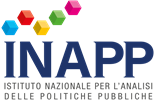Challenges and opportunities for Geography Education beyond the 21st century: the importance of speaking about climate change inspired by Chew-Hung Chang
Abstract
In the spring of 2018, Prof. Chew-Hung Chang (President of the Southeast Asian Geography Association and Co-Chair of the International Geographic Union – IGU – Commission on Geography Education) spent time at the Sapienza University of Rome to discuss research and didactical perspectives with the colleagues of Geography from the Department of Letters and Modern Cultures. During his visit at the University, Prof. Chew-Hung Chang noticed the panel placed inside the atrium of the Faculty of Letters and Philosophy, which represents Article 3 of the Italian Constitution that says: “All citizens have equal social dignity and are equal before the law, without distinction of sex, race, language, religion, political opinion, personal and social conditions”. These were the words that he chose to start his speech with, entitled “Challenges and opportunities for Geography Education beyond the 21st century”, which took place on 8 May 2024 in front of a number of students from the “Geographical Sciences for Environment and Health” and “Archeological Sciences” courses and several Ph.D. students.References
Azzari M., Zamperlin P. and Landi F., “GIS in Geography Teaching”, J-READING (Journal of Research and Didactics in Geography), 2, 2, 2013, pp. 27-42.
Cantell H. and Rikkinen H., “Lifelong Geo-graphical Education”, in Gerber R. (Ed.), International Handbook on Geographical Education, Dordrecht, Springer, 2003, pp. 301-313.
Chang C. and Kidman G., “Considering geographical and environmental education at scales”, International Research in Geogra-phical and Environmental Education, 30, 2, 2021, pp. 91-94.
Chang C. and Kidman G., “The rise of generative artificial intelligence (AI) language models – challenges and opportunities for geographical and environmental education”, International Research in Geographical and Environmental Education, 32, 2, 2023, pp. 85-89.
Chang C., Pascua L. and Ess F., “Closing the ‘hole in the sky’: the use of refutation-oriented instruction to correct students’ Climate Change misconceptions”, Journal of Geography, 117, 1, 2018, pp. 3-16.
Delors J. (Ed.), Learning: the treasure within: report to UNESCO of the Interna-tional Commission on Education for the XXI Century (highlights), Paris, UNESCO, 1996.
Francis R., “Ecosystem prediction and management”, in Castree N., Demeritt D., Liverman D. and Rhoads B. (Eds.), A companion to Environmental Geography, John Wiley and Sons, 2016, pp. 421-441.
IGU, “International Charter on Geographical Education”, 2016, https://www.igu-cge.org/wp-content/uploads/2019/03/IGU_2016_eng_ver25Feb2019.pdf.
IPCC (International Panel on Climate Change), “Synthesis report of the IPCC sixth Assessment Report (AR6)”, 2023, https://re-port.ipcc.ch/ar6syr/pdf/IPCC_AR6_SYR_LongerReport.pdf.
Patterson T., “Google Earth”, in Warf B. (Ed.), Geographies of the Internet, Routledge, 2021, pp. 241-251.
Pesaresi C., “From education to job opportunities: defining professional profiles for geographers with high competences in GIS environment”, in Tambassi T. (Ed.), The Philosophy of GIS, Springer Nature Switzerland, 2019, pp. 253-264.
Sörlin S. and Isberg E., “Synchronizing earthly timescales: ice, pollen, and the making of proto-Anthropocene knowledge in the North Atlantic region”, Annals of the American Association of Geographers, 111, 3, 2021, pp. 717-728.
Stoltman J.P., Geography Education for Citizenship, Bloomington (Indiana, US), Social Studies Development Center, 1990.
Yearley S., “Non-governmental organizations and the Environmental Movement challenges in Climate Change framing”, in Baker Z., Law T., Vardy M. and Zehr S. (Eds.), Clima-te, Science and Society: a primer, Routledge, 2024, pp. 77-85.
Downloads
Published
Issue
Section
License
The Author assigns to the Nuova Cultura and to Italian Association of Geography Teachers all rights under copyright that can exist in and to the submitted paper. The Author warrants that the paper and images (photos, maps, graphs etc.) are original and that he/she is the Author of the submitted contribution and its parts; in the case of images taken by other publications, the Author must provide a specific authorization and must pay in advance any copyright.

This work is licensed under a Creative Commons Attribution 4.0 International License.












